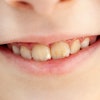
As dentistry becomes more personalized and the emphasis on prevention grows, so does the need to find out which patients will need more frequent visits and extra monitoring. A new study has focused on the developmental defects of enamel found in some patients and how they relate to dental caries.
An international team of researchers from New Zealand and Australia and led by a Brazilian researcher with the postgraduate program in epidemiology at the Federal University of Pelotas stated their conclusions clearly (Journal of Dentistry, May 2014, Vol. 42:5, pp. 540-546). "Dental caries experience was more common among children who had enamel hypoplasia in their posterior teeth than among those with none," they wrote. "In anterior teeth, there was no association. Enamel hypoplasia appears to be an important risk factor for dental caries."
“Enamel hypoplasia is associated with dental caries experience in posterior teeth”
Dental research has been focusing on the two main characteristics of patients linked to their likelihood of developing caries: sociodemographic background and biological makeup. The researchers cited a study that concluded that caries were most common in the first molars at age 9 and was, in fact, the site of the most prevalent caries occurrence at all ages (British Dental Journal, October 11, 2013). In addition, they turned their attention to classifications of common developmental defects of the enamel, demarcated opacities, diffuse opacities, or hypoplasia. Early diagnosis of these conditions is important to caries management in these populations so that improvements in the function and appearance of their dentition, while preventing future issues, can be delivered.
"Accordingly, the aim of this study was to determine whether an association exists between enamel defects (whether opacities or enamel hypoplasia) and dental caries among 8- to 12-year-old schoolchildren," the researchers explained.
To achieve this, they designed a cross-sectional multidisciplinary study that involved a representative sample of 8- to 12-year-old private and public schoolchildren in Pelotas, Brazil. Six dentists examined the participating students in their schools, for a total of 1,210 participants out of 1744 that were selected, or 69%. These dentists employed the Modified Developmental Defects of Enamel Index for enamel classification of the children's permanent teeth. Before the examination, the mothers of the participants returned a questionnaire containing demographic, socioeconomic, and behavioral data. They also gathered data about the child's age, sex, and toothbrushing habits with fluoridated toothpaste prior to the age of 3.
"Examiner agreement was high, examiners were unaware of the study hypothesis, there was a high participation response rate, adequate statistical power, and the sample was representative," the researchers noted.
Researchers found that a slight majority of the participants were female, 43% had mothers with more than 9 years of education, and 64% had brushed with fluoridated toothpaste before the age of 3. Additionally, 32% had caries, while 64% had enamel defects. Among the latter group, 35% had diffuse opacities, 30% had demarcated opacities, and 4% had enamel hypoplasia.
More than 21% of the posterior teeth with enamel hypoplasia had caries, while 8% and 7% of the teeth with demarcated opacity and diffuse opacity had caries, respectively. The researchers determined that, after confounding factor adjustments, the odds of having dental caries was three times higher for children with enamel hypoplasia (posterior teeth) than for those who did not have it.
Other factors proved to be important as well. The 10- to 12-year-olds in the study were more than twice as likely to have dental caries in their anterior teeth than their younger participants, the researchers wrote. Meanwhile, those who began using fluoride toothpaste at a later age were 32% more likely to have caries in their posterior teeth. And the children of mothers with five to eight years of education were 91% more likely to have dental caries in their posterior teeth than the children of better educated mothers.
"The main finding was that enamel hypoplasia is associated with dental caries experience in posterior teeth," the researchers stated, after adjusting for demographic, socioeconomic, and behavioral characteristics. "Moreover, it might not only itself render the tooth more prone to caries development, but also be (in part) a proxy indicator for substandard nutrition and/or childhood infections."
The study results can help clinicians determine how often certain patients should return for cleanings or checkups and help them find ways to minimize childhood dental pain and tooth loss later in life.



















